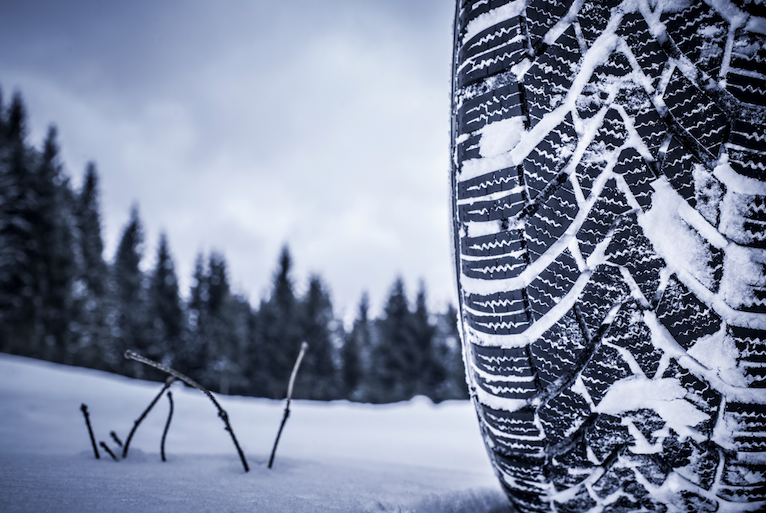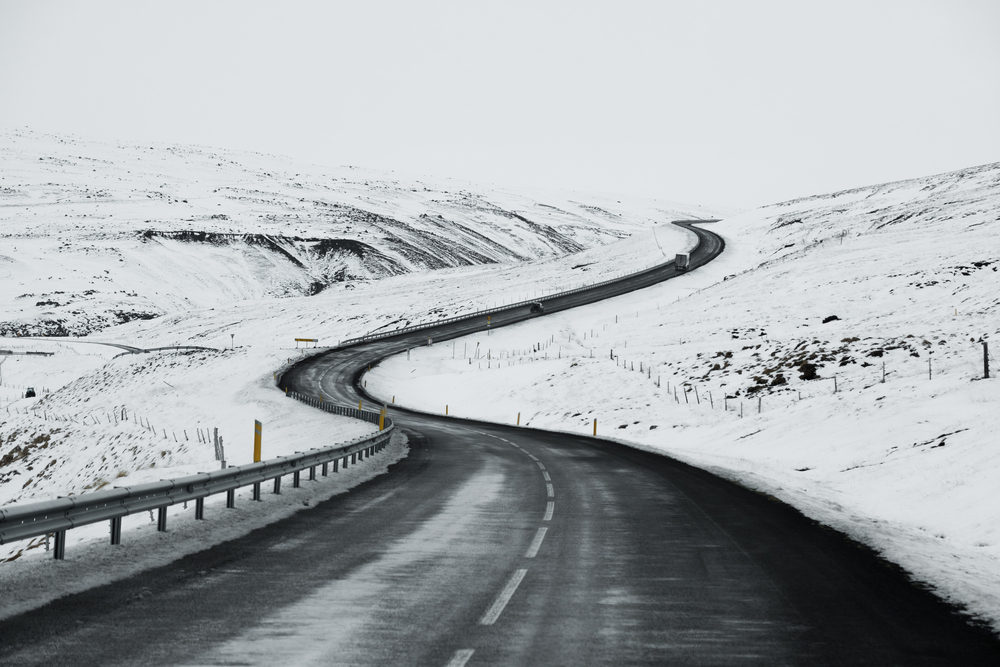Driving in snow will significantly change how you and your car behave should a situation arise. It is essential to be fully aware of limits and how fast things can go wrong. The lack of grip can immobilise even the most able of cars from time to time. Some vehicles are much better in the snow than others, but in some situations, even the most able snow warriors can fail.
With this in mind, it’s worth staying focused on your driving environment. Skidding, sliding, and hitting things are the greatest aspects of driving in snow. Even an excellent driver can have a momentary lapse of judgement, which can cause serious issues in the snow.
Here are a few tips:

Prepare Your Vehicle
Check Tyres: Make sure your tyres are correctly inflated and have sufficient tread. Winter tyres (or snow tyres) are specifically designed for colder temperatures and snow, providing better grip. If you’re in an area with frequent snow, consider investing in a set.
Battery and Antifreeze: Cold weather can strain your battery. Ensure your car’s battery is in good condition, and check the antifreeze levels to prevent the engine from freezing.
Wipers and Washer Fluid: Use winter-grade windshield washer fluid to prevent freezing. Ensure your wiper blades are in good condition and able to clear snow and ice.
Lights and Indicators: Ensure all lights, including headlights, tail lights, and indicators, are working properly. Snowy weather often reduces visibility, so having all lights functioning is critical.
Before You Start Driving
Clear Snow and Ice: Before setting off, clear all snow and ice from your windows, mirrors, lights, and the roof of your car. Snow on the roof can slide down and obstruct your view or fly off and hit other vehicles.
Check the Weather Forecast: Be aware of the forecast and road conditions. If snow or ice is expected, plan extra time for your journey and consider postponing if the conditions are too severe.
Plan Your Route: Stick to well-traveled roads when possible. Major roads and highways are usually cleared and treated quicker than smaller, rural roads.
While Driving
Drive Slowly: Snow and ice reduce traction, so slow down to maintain control of your vehicle. Even if roads appear clear, the temperature can cause icy patches, especially on bridges, overpasses, and shaded areas.
Increase Following Distance: Allow more space between you and the vehicle in front of you. Stopping distances are much longer on snow and ice, so aim for at least 8-10 seconds between you and the car ahead.
Use Lower Gears: In manual vehicles, use lower gears to provide more control and avoid wheel spin. In automatic vehicles, using the “snow mode” or manually shifting to a lower gear can help reduce the chances of slipping.
Smooth and Gentle Movements: Avoid sudden acceleration, braking, or steering. Steer gently, brake slowly, and accelerate gradually to prevent losing traction. Jerky movements can lead to skidding or sliding.
Use Your Headlights: Keep your headlights on, even during daylight hours, to improve your visibility to other drivers and help you see the road better in snowy conditions.
Don’t Use Cruise Control: Avoid using cruise control in snow or icy conditions. It can cause your car to maintain speed despite slippery roads, increasing the risk of losing control.
Dealing with Skidding
If You Skid: If your car begins to skid, remain calm and follow these steps:
Do not panic: Take your foot off the accelerator and keep calm.
Steer in the direction of the skid: If your back end slides to the left, turn the steering wheel left. If it slides to the right, steer right. This will help you regain control of the car.
Avoid Slamming the Brakes: Don’t slam on the brakes during a skid, especially not in snow, as this will cause the wheels to lock and worsen the skid. Instead, try pumping the brakes gently if you need to slow down.
Counter-Skid with ABS: If your car has ABS (Anti-lock Braking System), apply steady pressure to the brake pedal. ABS helps, to a degree, even in snow, prevent the wheels from locking and allows you to maintain steering control during a skid. To what degree varies, as your vehicle will have so little grip to work with when in the snow – virtually none in some instances. The ABS pulsating feel you get through the brake pedal in snow will be triggered much sooner and with relatively little effort. Often, the ABS will be triggered as soon as you touch the pedal.

Use Caution on Bridges and Overpasses
Bridges Freeze First: Remember that bridges and overpasses freeze quicker than other roads, as they’re exposed to air above and below. These areas can be icy even when other roads seem clear. Approach bridges slowly and cautiously.
Keep a Winter Emergency Kit
Emergency Supplies: It’s always a good idea to carry a winter emergency kit in your car. Essential items include:
Blankets or warm clothing
Ice scraper and snow brush
First aid kit
Food and water (especially for longer trips)
Sand or cat litter for traction if you get stuckFlashlight with extra batteries
A phone charger (preferably a portable power bank)
Shovel and Tow Rope: If you get stuck in snow, a small shovel and a tow rope can be very helpful. You can dig your car out or assist another driver if needed.
